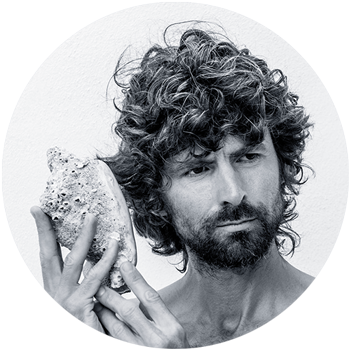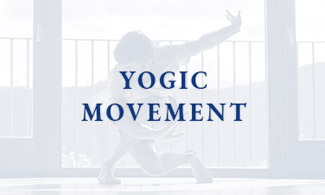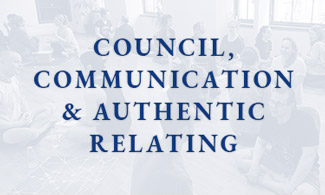
Put Down The iPhone, Get Off The Bandwagon! Eight Yoga ‘Tips’
I was recently asked, ‘What’s one piece of advice you would give to someone just starting their yoga journey?’ I didn’t limit it to one thing, but offered thoughts along these lines.
Forget about ‘the one thing’
First of all, forget about ‘one piece of advice’. Discard all misleading ideas of ‘the one thing’, of one size fits all, of the simple take away formula. Banish and dissolve all ideas of ‘life hacks’. Leave off hacking life to pieces. Yoga is the way of skilful action. I have a friend who is a master carpenter. Does he hack the wood? No, he does not. I asked one of his colleagues how he works: ‘He romances the wood’ was the beautiful reply. Yogaḥ karmasu kauśalam (Bhagavad Gītā 2.50) – yoga is skilfulness in the things that we do. Becoming kuśala – adept, is not s simple, one thing process. Rather, it is a whole system concerted endeavour. We might compare it to a great voyage circumnavigating the globe. If we are to reach the far shore beyond being caught up in the pairs of opposites, it will require great endeavour, craft, application, studentship, diligence and wholehearted commitment, not to any narrow thing, but to the whole thing of life.
Make friends with the brahmamuhurta
Second, make friends with the brahmamuhurta, the magical time around 4-6am. Consecrate a portion of your day for yoga, for inviting all your different parts and powers and intelligences to come together. One of my teachers told me: ‘Give yourself two hours a day, to go inside.’ At first, this may sound like a lot. However, if we use those two hours skilfully, the rest of the day can be that much more efficient and easeful. The first step is half the journey, start as you mean to go on.
Samatvam yoga ucyate – Yoga is balance. Yogaḥ karmasu kauśalam – yoga is skilfulness and efficiency in our actions. When we have a lot to do, it is that much easier when we operate from a seat of balance and integration. Our actions are easier and more powerful when we operate from coherence and congruence. If we give ourselves an hour in the brahmamuhurta we may experience a tremendously positive impact in the rest of the day. One way we can think of it is as self care that will help us serve others and perform all our other tasks and commitments better. With regard to the two hours, it is also worth considering what a friend was told by his teacher: ‘if you don’t have time to meditate one hour a day, then you need to meditate two hours a day.’
Practice yoga ie meditation every day
Which brings me to the next thing. Another piece of advice I heard from a teacher, ‘contact a genuine, living tradition and learn to meditate.’ Yes, and if the genuine, living tradition is not encountered in your environment, start with a simple meditation technique and consecrate twenty minutes morning and evening to this part of practice. Some might say things like, ‘oh I don’t need that, I get my moving meditation when I do my āsana practice, ot when I go running’. Certainly, we can access and cultivate the medi-state of being balanced and integrated in all manner of activities. However, the foundational practice technique of yoga is meditation for good reason. When the sense powers are turned out in external activity it precludes subtler realms of experience, the type of subtler concentrated experience that is most potent for cleansing and recalibrating the lenses of our awareness and inviting them deeper into the rich experience of what it means to work together in deep accord. The effects of this then reach out to infuse our worldly activity. Of course, we can certainly gain similar benefits from other yogic activities. However, when it comes to meeting one’s inner self and remembering more of who we are, there is no substitute or alternative to this quiet, focused, internal inquiry. And it is worth it, a thousand times over. As the tradition reminds us, just as an arrow needs to be drawn back away from its target to then move with power and precision towards it, so our constituent powers need to be drawn in to that quiet subtle space where they can rest and attune so as to be able to support cohesive external activity.
Give yourself an hour (at least) of the Brahmamuhurta and consecrate at least a part of that, to a meditation technique that is helping you cultivate cittaprasādana – clarification of the lenses of our awareness.
Develop a new relationship with being wrong or mistaken
As we practice meditation and invite cittaprasādana, we will very likely start seeing things we didn’t notice before, in the world around us, and within ourselves. We may become more aware of habits that were previously confined to a subconscious realm. We may start to realise that we harbour tendencies and habits that are not serving us and in some instances may be contrary to our deeper longings and values. We may realise, ‘wah, I’ve been wrong. I have been operating under a veil in that aspect of my life. I was mistaken about that…’ Yoga means going beyond the known. We have to practice owning that we don’t know, that we don’t have it all figured out. I would suggest that we learn and practice ‘killing’ our (egoic) self softly. Learn to acknowledge ‘I’ve been wrong/mistaken/blinkered’/my perception and attitude has been veiled/coloured by my accrued conditionings more than I realised.’ Practice considering multiple perspectives, especially ones that fly in the face of your ‘beliefs’ and remember that we often reject and condemn what we cannot stand or fear in ourselves. Often in contemporary society, we don’t like to admit we were wrong, people perform all sorts of mental and rhetorical gymnastics to avoid it, and this is a tragic trap. Once we own that we do not know, we create so much more space to learn.
Next comes a lyric from an Arctic Monkeys song:
Put down the iphone, get off the bandwagon
Put down the iphone
Really, ensure that there are significant stretches of your life where you are not on your phone, not allowing the lenses of your awareness to be subject to the beguiling, hall of mirrors affront of the smart phone notification/social media realm. And make sure that the first hour(s) of your day are not polluted by the phone. Do not let the start of your day be influenced by what the media or the AI throws at you. Use your own natural intelligence to start as you mean to go on and invite your whole system into the type of congruence which will allow you to meet the challenges of the day in keeping with your true desires.
Get off the bandwagon
For a while there, ‘yoga’ was trendy. Except that it wasn’t yoga that was trendy, but going to classes that called themselves ‘yoga’, and perhaps carrying a yoga mat was ‘cool’ in the eyes of some… Yet the trend didn’t really promote ‘yoga’. Thirty years since ‘yoga’ became a ‘normal’ word, twenty years since yoga studios became things that were no longer a mysterious concept, it remains the case that the vast majority of people, including those who go to yoga classes, still have very little idea about what yoga is. There are still many who speak of yoga and meditation as if they were different things. Yes, compared to thirty years ago, meditation is much more widely accepted and recognised as being beneficial, but amongst the general public awareness of yoga remains at a very superficial level, as things on the bandwagon often do.
Seriously, get off the bandwagon. Yoga is never about bandwagoning. Again and again, yoga will ask us to break the inertia of well established, but no longer useful habits. Rolling along with the crowd is not a recipe for being able to do this. Further, where does this temptation to get on the bandwagon come from? From the very weaknesses yoga asks us to confront and remedy. As humans we long to belong. People want to find their people. We want to fit in. But fit in to what? As Krishnamurti said: ‘It is no measure of health to be well adjusted to a profoundly sick society’. Yoga would like us, and can help us, to fit into our own skin that much more easily. It can help us feel at ease whatever crowd is around, and it can help us find ease in solitude and silence and eventually make the great journey from loneliness to all-one-ness.
Stay a student
Learn to be a student, practice studentship. Stay an apprentice, only then can one approach mastery.
One of my Indian friends whom I consider a great flute master related once how he had the privilege of meeting a great master who was then in his eighties. The master was playing a rāga that he had been practising for more than seventy years. His play totally captivated all who were in the room. When he left off, my friend commented on the beauty of his playing. And the eighty-five year old said, ‘you know, just these last few days,’ (after his being more than seventy years with this rāga) ‘I feel I am just beginning to understand something.’
There are yoga teacher training programs based around two hundred hours of contact time… but yoga was never intended to be reduced to a short term program of study, it is a lifelong path. Think a thousand hours a year, for twenty years, as an initial, minimum, basic apprenticeship. We may learn a lot on a two hundred hour training program. But if it’s a good one, it will not leave us thinking that we have ’studied’ yoga, or ‘done’ our training in the past simple tense, but will have opened up our perspective and kindled our enthusiasm for the riches of ongoing, deepening education and exploration.
Get out of the valley
As we go about our lives, we get into habits and we fall into grooves. A certain stimulus arises and we play the same old tune. Habits are useful of course, but they can also be dual edged swords. As we repeat the previously tried and established patterns, we can fall deeper into these grooves. In some ways it can be as if we are living in a valley, with our perspective limited by the cliff walls of our habitual ways of moving, thinking and operating in the world. The perspective down there in our ‘valley’ is familiar, and it may feel like there is a lot going on there, but there is much more out there.
So, make a regular habit of climbing out of the habitual grooves that we tend to go around in, and check in with what you really want.
Am I living my life in accord with my deeper values? Or perhaps, more foundationally, ‘what are my deepest values? And how can I align my actions with them?
Remember, yoga is inquiry and the cultivation of deepening awareness and harmony.

James Boag | Whole Life Yoga
The yoga of the whole human being. Practical philosophy, storytelling, movement, inquiry, looking in ways that reach beyond our habitual ways of looking.
Listen to James’ unique whole life yoga perspectives on the WHOLE LIFE YOGA podcast.











